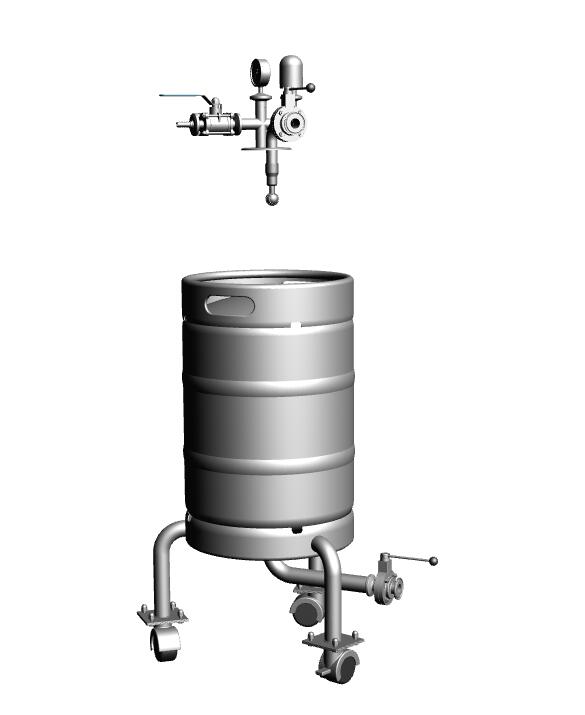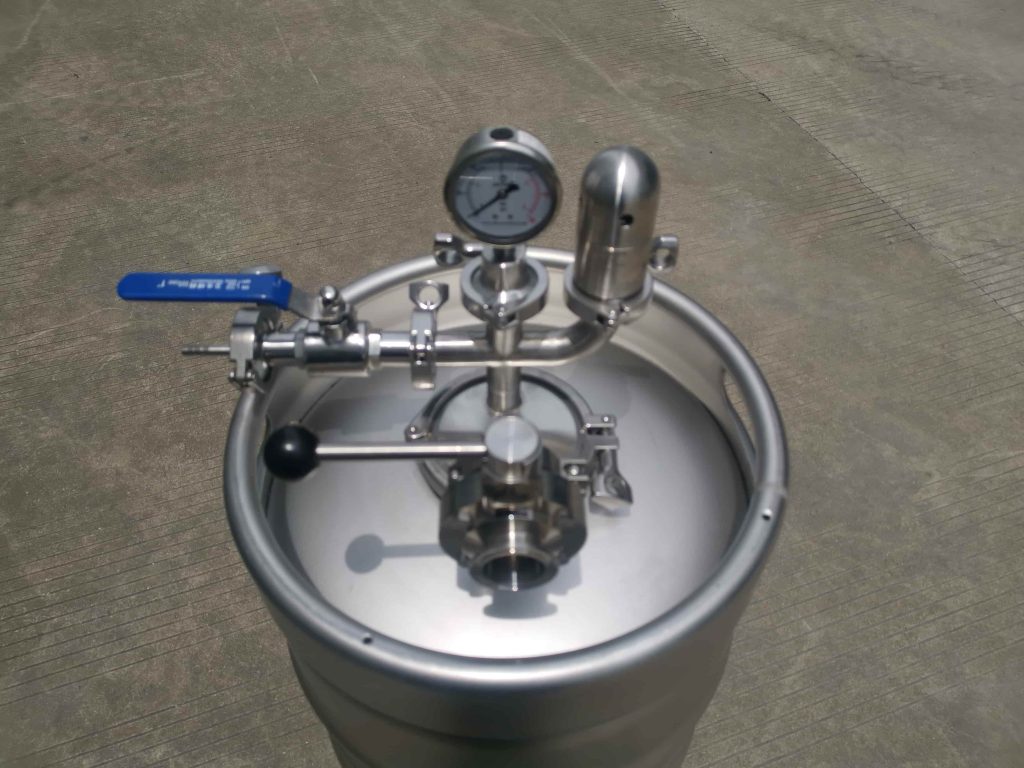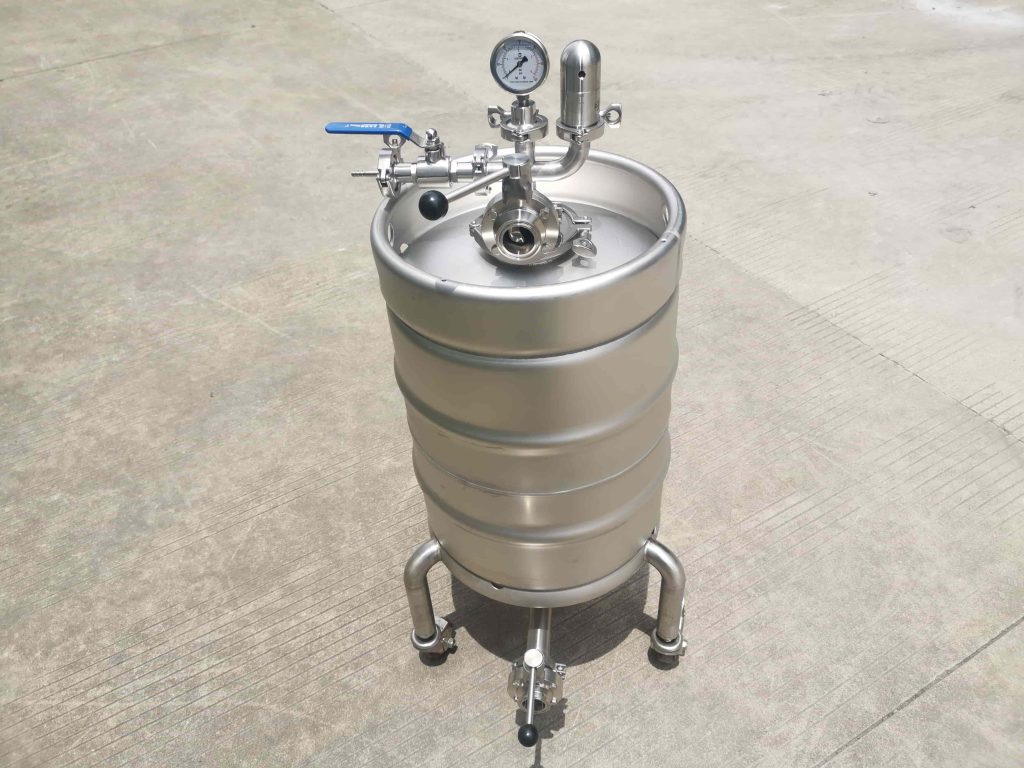Introduction

Yeast brink kegs have revolutionized the way brewers handle yeast, offering unparalleled control and efficiency. This comprehensive guide dives deep into the world of yeast brink kegs, covering everything from their basic function to advanced techniques. Whether you’re a seasoned pro aiming for peak performance or just starting your brewing journey and eager to learn best practices, this guide will equip you with the knowledge to maximize the potential of your yeast brink keg. Understanding the nuances of yeast management is crucial for consistent, high-quality brews, and yeast brink kegs are a key tool in that pursuit.
What is a Yeast Brink Keg?
A yeast brink keg is a specialized vessel designed for storing and managing yeast. Unlike traditional methods like open-top buckets or carboys, yeast brink kegs allow for the collection, storage, and reuse of yeast, promoting consistency and cost-effectiveness in brewing operations. These kegs come in various sizes and configurations, catering to different brewing needs, from small-batch homebrewers to large-scale commercial breweries. They provide a controlled environment that helps maintain yeast health and viability.
Benefits of Using a Yeast Brink Keg
- Yeast Management: Yeast brink kegs provide a controlled environment for yeast storage, ensuring viability and vitality. This allows brewers to maintain a consistent culture of healthy yeast, leading to more predictable fermentations.
- Cost Savings: By reusing yeast, brewers can significantly reduce the cost of purchasing new yeast strains. This can be a substantial savings, especially for breweries that produce multiple batches per week.
- Consistency: Storing and reusing yeast from successful batches promotes flavor consistency in subsequent brews. This is because the yeast culture adapts to the specific brewing environment, leading to more predictable flavor profiles.
- Reduced Waste: Yeast brink kegs minimize yeast waste, contributing to a more sustainable brewing process. Less yeast is discarded, reducing the environmental impact of brewing operations.
- Improved Sanitation: The enclosed design of yeast edge buckets reduces the risk of contamination compared to open-top methods. This helps prevent unwanted bacteria or wild yeast from spoiling the batch.
Types of Yeast Brink Kegs
Yeast brink kegs are available in various materials, sizes, and configurations. Here are some common types:
- Stainless Steel: Durable, easy to clean, and resistant to corrosion. Stainless steel is the most popular material for yeast brink kegs due to its longevity and resistance to bacterial growth.
- Plastic: Lightweight and cost-effective, but may not offer the same durability as stainless steel. Plastic kegs are often used by homebrewers due to their lower cost.
- Conical vs. Cylindrical: Conical bottoms facilitate yeast settling, while cylindrical kegs offer a more compact design. Conical bottoms allow for easier separation of yeast from trub, while cylindrical kegs are better suited for smaller spaces.
Essential Equipment for Yeast Brink Kegging
To effectively utilize a yeast brink keg, you’ll need the following equipment:
- Yeast Brink Keg: The primary vessel for storing and managing yeast. This is the heart of your yeast management system.
- Pressure Relief Valve (PRV): Ensures safe pressure levels within the keg. PRVs are crucial for preventing dangerous pressure buildup.
- Thermometer: Monitors yeast temperature for optimal storage. Maintaining the correct temperature is vital for yeast health.
- Sample Valve: Allows for easy yeast sampling and analysis. This allows brewers to check the viability and vitality of their yeast.
- Transfer Tubing: Connects the yeast edge bucket to other vessels. Tubing is used for transferring yeast to and from the keg.
- Sanitizing Solution: Maintains a sterile environment for yeast storage. Proper sanitation is essential for preventing contamination.
Step-by-Step Guide to Using a Yeast Brink Keg
- Sanitize: Thoroughly clean and sanitize the yeast brink keg and all associated equipment. This is a critical step to prevent contamination.
- Collect Yeast: After fermentation, collect the yeast from the primary fermenter. This is typically done after the beer has been transferred to a secondary fermenter or keg.
- Transfer: Carefully transfer the yeast into the yeast brink keg. Avoid introducing any unwanted solids or trub.
- Store: Store the yeast at the appropriate temperature for your chosen strain. Different yeast strains have different optimal storage temperatures.
- Monitor: Regularly check the yeast’s vitality and viability. This can be done through visual inspection or by performing a cell count.
- Reuse: When ready, transfer the yeast into a new batch of wort. This can be done directly or after a period of propagation.
Troubleshooting Common Issues
- Contamination: Implement strict sanitation practices to prevent contamination. This includes thorough cleaning and sanitizing of all equipment.
- Low Viability: Ensure proper storage temperature and monitor yeast health. Low viability can result in slow or incomplete fermentations.
- Off-Flavors: Investigate potential causes, such as stressed yeast or improper handling. Off-flavors can be caused by a variety of factors, including yeast health and fermentation conditions.
Advanced Techniques for Yeast Brink Kegging
- Yeast Washing: Purify yeast by removing trub and other unwanted substances. This can help improve the quality of the yeast culture.
- Yeast Rinsing: Extract additional yeast from trub to maximize yield. This can help reduce yeast waste and save money.
- Yeast Propagation: Cultivate yeast to increase cell count for larger batches. This is often done for commercial brewing operations.
Yeast Brink Keg Maintenance and Cleaning

Regular maintenance is crucial for the longevity and performance of your yeast brink keg. Here’s a recommended cleaning schedule
| Task | Frequency |
|---|---|
| Rinse with warm water | After use |
| Sanitize | Before use |
| Deep clean | Monthly |
Conclusion
Yeast brink kegs are a valuable asset for any brewer looking to improve yeast management, reduce costs, and enhance the quality of their brews. By mastering the techniques outlined in this guide, you can unlock the full potential of your yeast brink keg and take your brewing to the next level. Proper yeast management is a cornerstone of consistent and delicious beer.
FAQ
Q: How long can I store yeast in a yeast brink keg?
A: With proper storage, yeast can be stored for several weeks or even months. The exact duration depends on the yeast strain and storage conditions.
Q: What is the ideal storage temperature for yeast?
A: The optimal temperature varies depending on the yeast strain, but generally ranges from 34-40°F (1-4°C). Consult the yeast supplier’s recommendations for specific strains.
Q: Can I use a yeast brink keg for different yeast strains?
A: Yes, but ensure thorough cleaning and sanitation between strains. Cross-contamination can lead to unexpected flavors in your beer.
Q: How do I know if my yeast is still viable?
A: Perform a viability test or observe for signs of activity, such as krausen formation. A healthy yeast culture will produce a vigorous fermentation.

